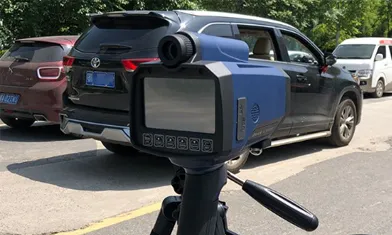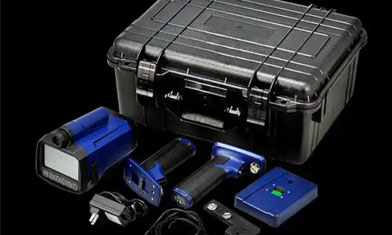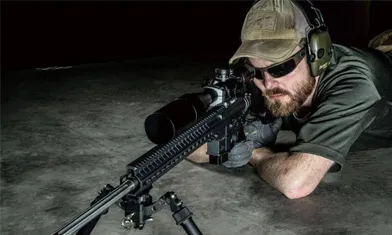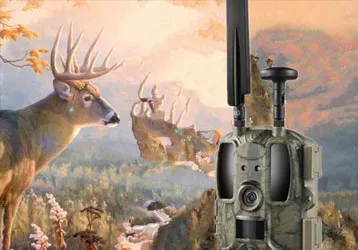軍事科学の普及高価なサーマルイメージングサイトはどのように機能しますか?
Currently, dozens of different scopes are available in the dark zone, each with a different magnification and features. However, the most unique of these is undoubtedly the Onick RM-1 thermal imaging scope. Its unique capabilities allow us to easily detect enemies hiding in brush, making it a true "natural enemy." However, its high price has deterred many pioneers from purchasing it. Today, Lao Pi will explain the principles and applications of thermal imaging scopes.
Most scopes used in the dark zone fall into two main families: reflex sights and telescopic sights. While their principles differ, they ultimately allow visible light reflected from the target to pass through the scope and be detected by the naked eye, thus achieving aiming.

However, thermal imaging scopes operate differently. It's well known that when an object's temperature is above absolute zero (-273.15°C), it emits infrared radiation (also known as infrared rays) into the surrounding area. The higher the temperature, the more intense the infrared radiation. This is what modern physics calls "thermal radiation." Unlike visible light, infrared radiation cannot be seen by the naked eye. Thermal imaging works by capturing and analyzing this invisible light, distinguishing objects with higher temperatures from the surrounding environment, thereby effectively detecting hidden enemies.
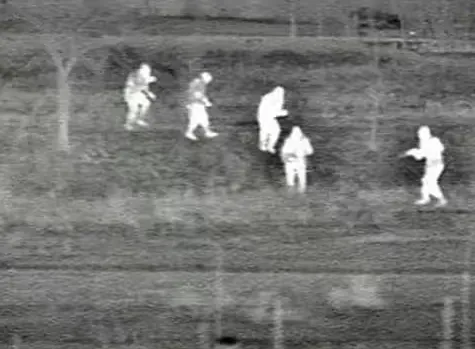
A thermal imaging sight uses a temperature range based on the target's temperature (for example, around 36°C for a human target, but this range can be adjusted to suit different targets). After capturing infrared radiation, it then uses different colors or black and white to distinguish different temperatures. Of course, the user must determine whether the target is the target based on the image and outline.
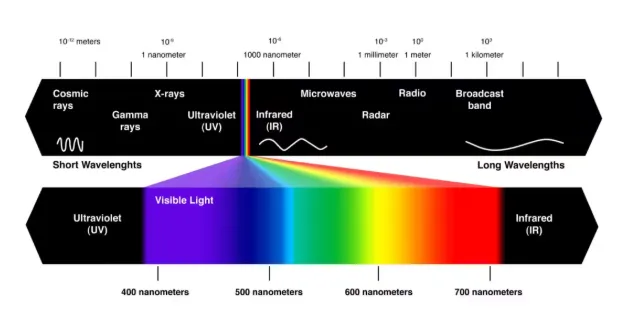
A target depicted in white (high temperature) stands out against a dark background (low temperature).
Military thermal imaging sights
As early as the 1940s, various countries showed interest in the military application of thermal imaging technology. However, the photosensitive components of the time could only detect the presence of infrared radiation, not produce images. With the advancement of materials science, military thermal imaging technology has gradually evolved into a wide range of equipment, from infrared scanning systems to individual thermal imaging sights.
Modern thermal imaging technology is divided into two types based on different principles: photon detection and heat detection. Military thermal imaging sights generally use the latter, converting the heat contained in light into electrical signals, capturing and displaying the target's heat distribution in real time. While not as sensitive as the previous thermal imaging sight, it does not require a bulky, expensive, and energy-intensive cooling unit.
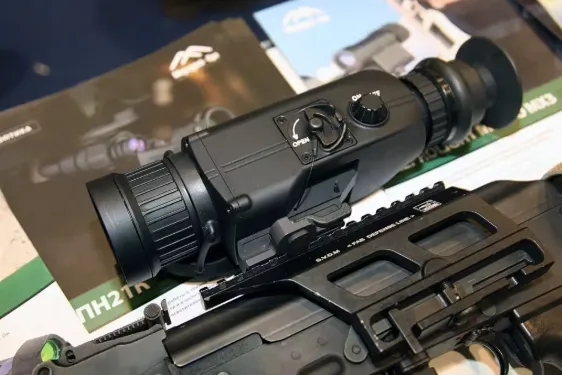
Modern Thermal Imaging Sights
The components used in thermal imaging sights vary depending on the model, but the core components are similar:
Infrared Detector: The infrared detector is a key component of a thermal imaging sight, detecting infrared radiation from a target object and converting it into an electrical signal. Common materials used include zinc selenide (ZnSe), mercury cadmium telluride (HgCdTe), and indium antimonide (InSb).
Optical Lens and Reflector: The optical lens and reflector in a thermal imaging sight are used to focus or reflect infrared radiation from a target object onto the infrared detector. These optical components are typically made of highly heat-resistant materials.
Display: Thermal imaging sights typically have a built-in display for real-time display of the thermal image. These displays can be liquid crystal displays (LCDs) or organic light-emitting diodes (OLEDs) and can display high-resolution thermal images and other information.
Power Supply: Thermal imaging sights require power to operate properly, typically using rechargeable batteries. These batteries typically have a long service life to meet the demands of prolonged operations.
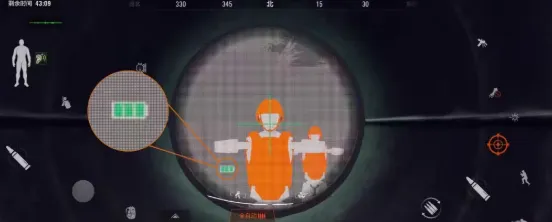
Note the battery indicator in the lower left corner.
In addition to being used as sights on light weapons, thermal imagers can also be mounted on helmets in the form of thermal goggles. Their operating principle is essentially the same as that of thermal imaging sights, and similar equipment is also available in the game, so I won't go into detail here.
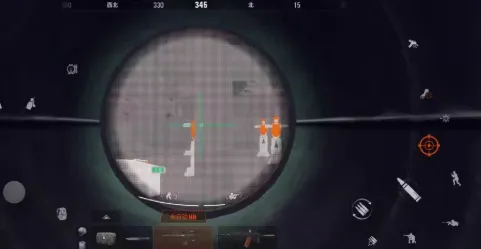
How to Counter Thermal Imaging
Given the power of thermal imaging, some may wonder: how can one avoid its detection in combat?
As I mentioned earlier when explaining the principle, thermal imaging sights primarily rely on capturing infrared radiation emitted by a target and identifying it based on the temperature difference between the target and the surrounding environment. To hide from such sights, there are two main methods: preventing your own infrared radiation from being captured, or reducing the temperature difference between yourself and the surrounding environment to make it indistinguishable.
First, the wall-penetrating thermal imaging we see in literary works can generally be dismissed as a figment of the screenwriter's imagination, as infrared radiation is blocked by most common materials, such as masonry, wood, and glass. Therefore, just like dealing with ordinary sights, as long as you're behind cover, you'll be difficult to detect with a thermal imaging sight. However, it's important to note that prolonged contact with cover (like pressing your palm against glass) will still reveal you due to heat transfer. So, to avoid thermal imaging detection, simply find a thicker object to shield yourself from the heat and prevent it from transferring heat to it.

The partitions in the training grounds in the game can block thermal imaging.
Also, reducing the temperature difference between yourself and the surrounding area is an effective method. By making the surrounding temperature similar to human body temperature (or vice versa), the enemy won't be able to detect you. For example, lighting a bonfire, using incendiary flares to raise the ambient temperature, or covering yourself in damp, cold mud to lower your body temperature—as the Governor does in Predator—can effectively blend in.
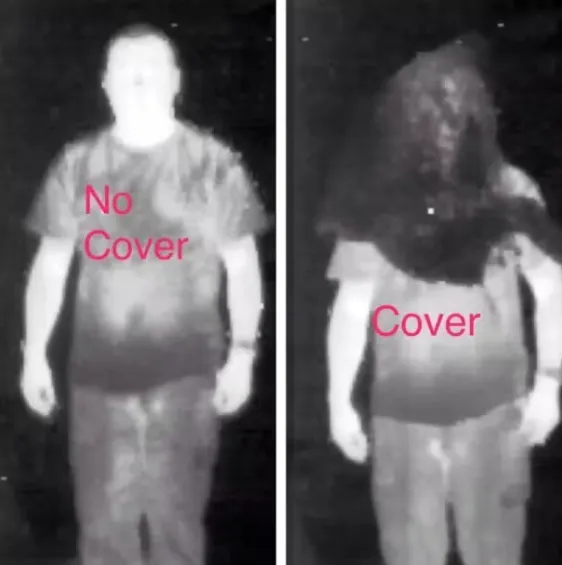
Of course, you have to defeat the enemy before the mud dries.
However, in modern military operations, militaries naturally don't resort to such primitive countermeasures. To counter thermal imaging detection, militaries around the world have developed camouflage techniques and equipment, ranging from anti-infrared military camouflage for individual soldiers to camouflage nets that can disguise positions and vehicles. Some tanks even have the ability to control heat-generating areas, disguising themselves as civilian vehicles through thermal imaging cameras. I wonder if this type of equipment will be introduced in the Dark Zone in the future?
That's all for today's discussion on thermal imaging. See you next time!
